Cel-Fi GO+, a truly different and promising cell booster
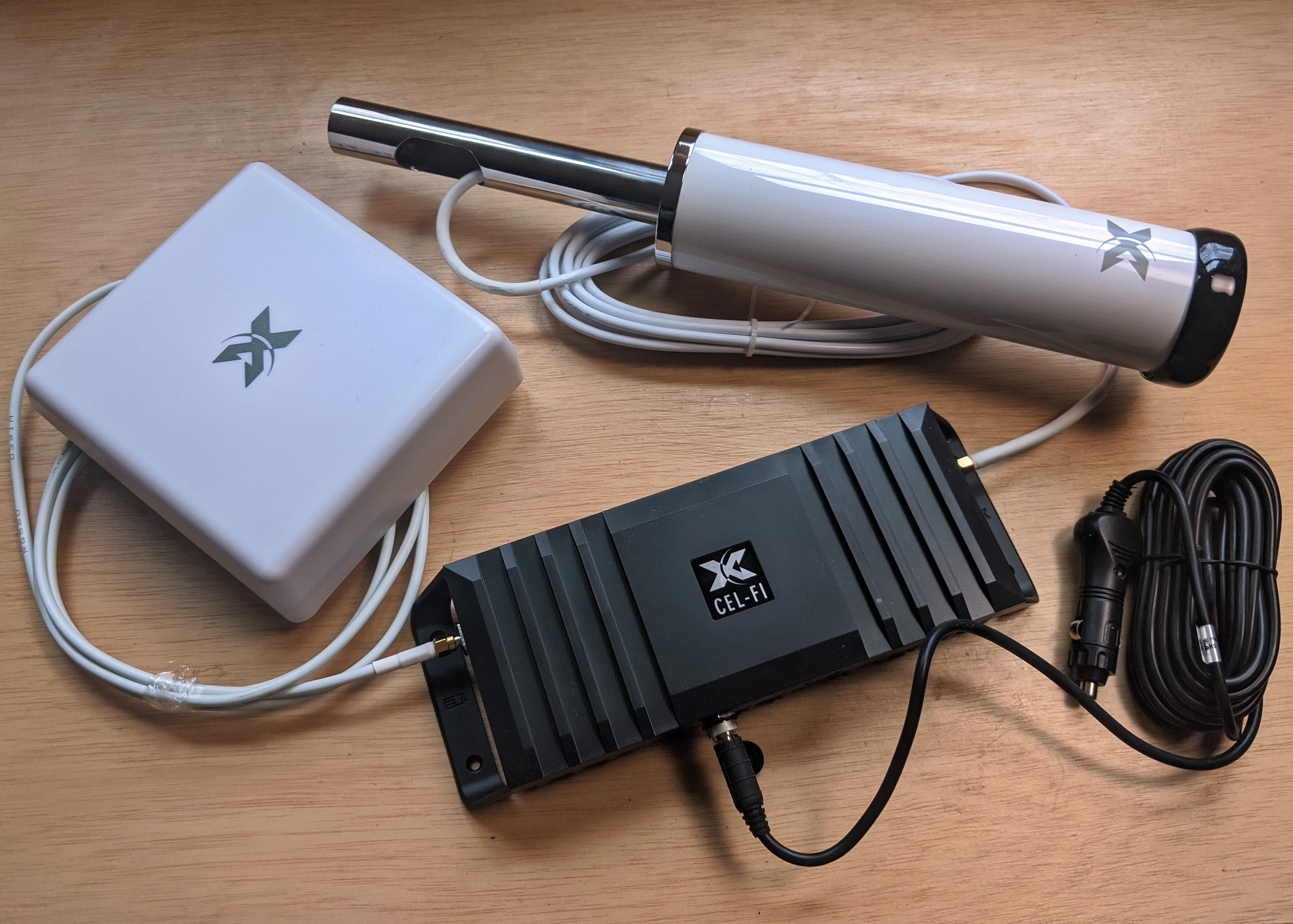
The Cel-Fi GO is different from every other cell booster I’ve tried over the years, starting with significantly greater signal amplification (when needed). The well-made hardware also supports a Bluetooth app that delivers significantly more information about what the booster is doing, as well as several control options. So, although this first testing was only done in my shop with an already usable Verizon signal, I’m quite hopeful that the GO will get the job done in even the more challenging cell holes found cruising the coast of Maine (and elsewhere).
More specifically, the Cel-Fi GO is a carrier-specific booster able to add 65 dB of gain in mobile mode or 100 dB in stationary mode, regulatory modes which might also be described as boat underway or at anchor. The Cel-Fi developers have apparently been meeting the FCC’s special single-carrier high-power standard for years — primarily for high-performance fixed-location boosters — but they only launched the more flexible dual-mode GO+ last summer. Consider the signal gain claims:
Cel-Fi GO+ offers industry-leading 100 dB gain in stationary mode — 1000 times greater than other offerings — to provide the highest carrier grade performance available. The same device can be easily switched to mobile mode with built-in software switching to deliver 65 dB gain — which is up to 100 times greater than other solutions on the market — for vehicles and boats on the move.
Wow, now that sounds like a booster with some extra reach! But then again, carrier-specific also means possible limitation, depending on your cellular needs. Unlike, say, the SureCall and Shakespeare mobile boosters I recently wrote about, the Cel-Fi GO I’ve set up will only work with Verizon phones unless I use the control app to switch carriers. And Cel-Fi doesn’t support every cell service, especially outside North America, although it does claim “all major US and Canadian Carriers” (and another feature of the Cel-Fi Wave app is easy firmware updates like the planned 5G rollout just announced).
This is what I mean by well-built hardware. The Cel-Fi GO is the first booster I’ve seen with a securely threaded and water-resistant power port and cable (though, like most boosters, it conveniently runs on 9-15 volts DC, with 2 amps of maximum draw). In fact, the GO case meets the NEMA 4 standard for outdoor use. Plus, note how the fastening brackets elevate the case so it can have bottom cooling fins too (and rubber vibration-mitigating fastening washers are included).
Right side up, as you might see it installed in a boat cabinet, the Go looks quite sharp. But you may never need to check out the simple red/green status LED because the Cel-Fi Wave app is so much more informative. And, at least for me, connecting it to the GO via Bluetooth only required opening the app near the powered-up booster, on both my Google Pixel 2XL phone and iPad Pro 11 tablet.
This is what you might first see on the app’s opening screen, assuming that the Cel-Fi Go was already set up for your cell carrier by a quality supplier (recommendation below) and that there’s at least a little signal to boost. That was the situation when I first tested the booster in my home shop/lab, and the completely automated results — as in “Things look good” — were striking in terms of the signal bars shown on my phone, especially with an app that details signal strength.
My faithful Network Signal Info phone app (above left) showed nearly maximum signal strength with GO boosting, and its signal-over-time graph indicates what happened with the booster off. But my first experience with the popular Network Cell Info app revealed even more. Not only is the Verizon signal improving from -111 to -69 dB by using the Cel-Fi booster and antennas, but the phone has also switched to a different LTE band and a different tower PCI number (as I learned in this excellent how-to-locate-cell-towers blog entry).
And, no, I never paid attention to this sort of cell service nuance before, and don’t really want to. But then again I do really want connectivity in some of my favorite remote cruising spots, and I’ve never had a booster with band controls before either.
There may well be situations out in the islands when switching off a cell band improves actual performance — the Perry Creek roaming annoyance for one (I hope) — and that can be done easily using the Cel-Fi Wave app’s Settings screen above. It’s where I can switch to Stationary mode too, when the boat is settled in a spot that needs maximum boost power.
The screenshot collage also shows the current list of Operators (cell carriers) that the GO can switch among, and its Antenna Position Test feature, another booster system first to my knowledge. The GO will capture and grade performance as you move either the inside or outside antennas, so good practice is to first find where the exterior antenna performs best in your rigging and then work on whichever interior antenna you choose (more on that below).
The Advanced section of the Wave app shows all sorts of booster and cell service details and acronyms I’m not familiar with. But it was interesting to see that the GO itself used different LTE bands at different times, even though the outside antenna remained fixed to my house. That may be because either screen 1 or 2 was taken during a rainstorm, and I’m willing to learn more if it means I can tweak the GO to maximum performance.
Incidentally, while the Wave app can also be used to check for (and download/install) GO firmware updates, that’s the only time your phone or tablet needs to be online to use it with the booster. (That’s true even when switching carriers, though that process is a major firmware reboot and takes a few minutes.)
What I call outside and inside cell booster system antennas, Cel-Fi calls donor and server, which makes sense when you consider situations beyond boats and RVs. So given their suggested Marine Solution kit, cell towers donate connectivity to the Cel-Fi Marine antenna, which is then boosted and served to the boat’s phone(s) with Cel-Fi’s patch antenna. You don’t want either antenna to hear the other, and the low-gain patch is least likely to interfere with a donor antenna that is not sufficiently separated by distance — vertical preferably — or RF shielding (like tin foil ;-).
But Waveform — the company that encouraged this test and arranged the product loan, as they did with the SureCall Fusion2Go (back when they were called the RepeaterStore) — also sent along a Cel-Fi Wideband Panel Antenna, and that’s been interesting. In this initial shop test with the donor and server antennas poorly separated, the GO booster seemed to handle the potential interference better than I’ve seen in the past (though experience with weaker cell signals is required).
And while the panel antenna’s industrial-strength pole mounting is not suitable for salt air or nice yacht interiors, I plan to fasten the four stainless studs to a thin panel that will then fasten to the pilothouse overhead. That way the 6.5-9 dB gain claimed for its 65- by 55-degree directional beam should feed our Verizon phones where we often use them, but hopefully not tangle with the marine donor antenna high on the mast. I will also learn by experience (and Wave app testing) if keeping my phone next to an interior patch antenna is still a better idea for maximum boost performance.
If your boat ties longterm to a dock with edge cell coverage, you could even try a Cel-Fi Wideband Directional Antenna, which is also officially authorized for use with the GO booster. (Using similar antenna designs by other brands is only a slightly outside the regulations, and may not change performance or interference a bit, but you will probably need a good FME Male to SMA Male adapter.)
The more I learn about cell booster technology, the more I appreciate the underlying complexity and the more I think that a boater — or even a general marine electronics installer/technician — will benefit from working with a technically well-informed dealer. And I recommend Waveform without hesitation. While they are the largest reseller of Cel-Fi equipment (and offer many other brands), I’ve learned that they are much more than an online reseller.
For instance, Waveform markets their own RSRF line of accessories — like the custom-cut LMR-400 equivalent coax cable that might improve your boat’s high antenna install — and they also install multi-carrier DAS (distributed antenna systems) all over the country (more detail here). Moreover, the Waveform team shares their cellular boosting expertise with thorough and seemingly non-partisan buying guides, a lively blog, and what-I’ve-found-to-be crack technical support.
Heck, Waveform CEO Sina Khanifar invites customer emails while spending spare time as a citizen advocate with significant roles at OpenSignal, Repair.org, and the Electronic Freedom Foundation. He seems passionate about getting all aspects of modern communications done right, and I’m happy to add that Waveform’s $764 Cel-Fi GO+ Marine Kit is competitively priced.
While I’m obviously excited about cruising with the Cel-Fi Go this summer — and hoping it will help me report back about further testing — its single carrier limitation and premium sophistication may not be for you. However, if you’re looking for any other level of cell boosting, I’d still advise contacting Waveform.






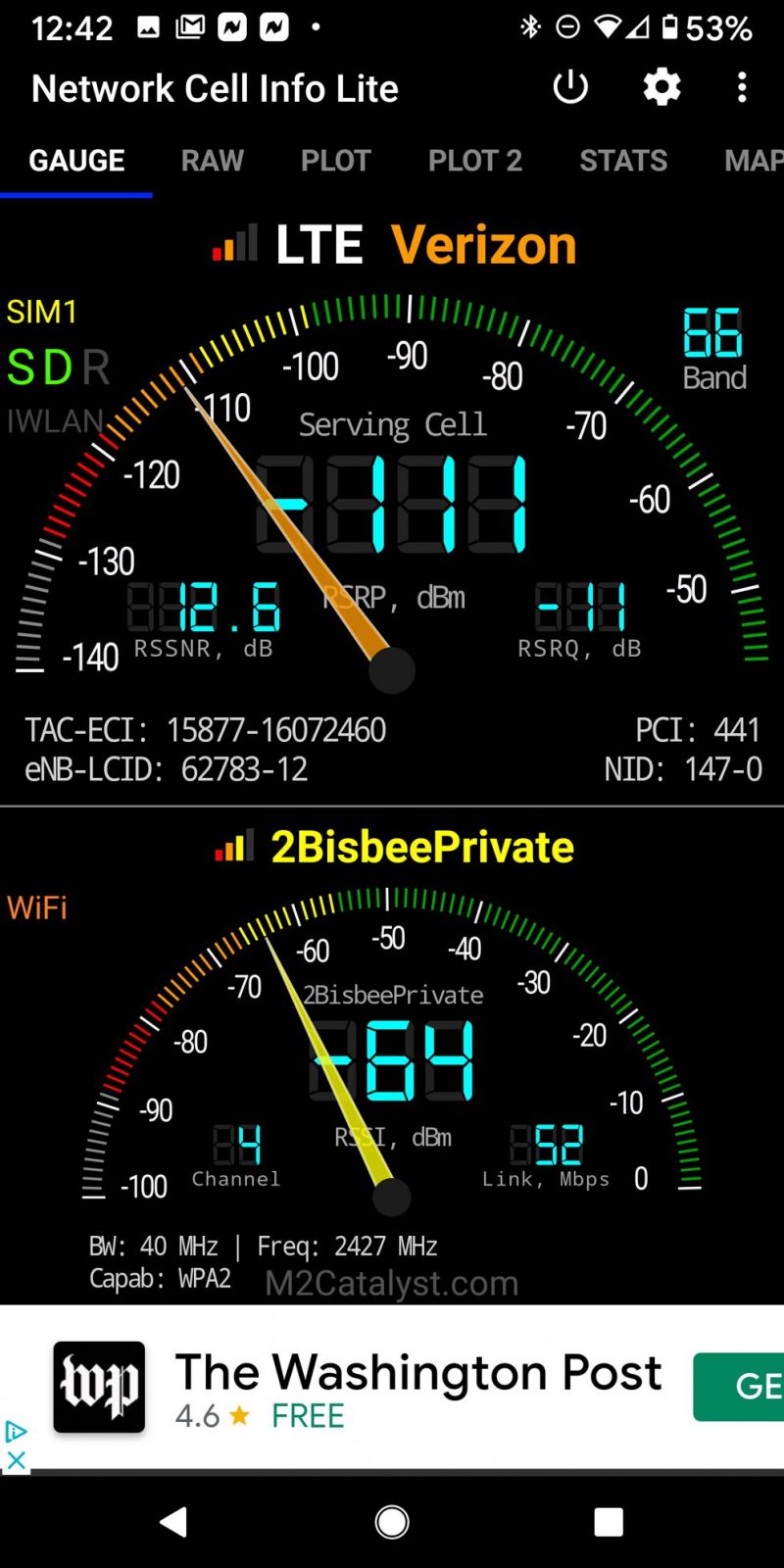
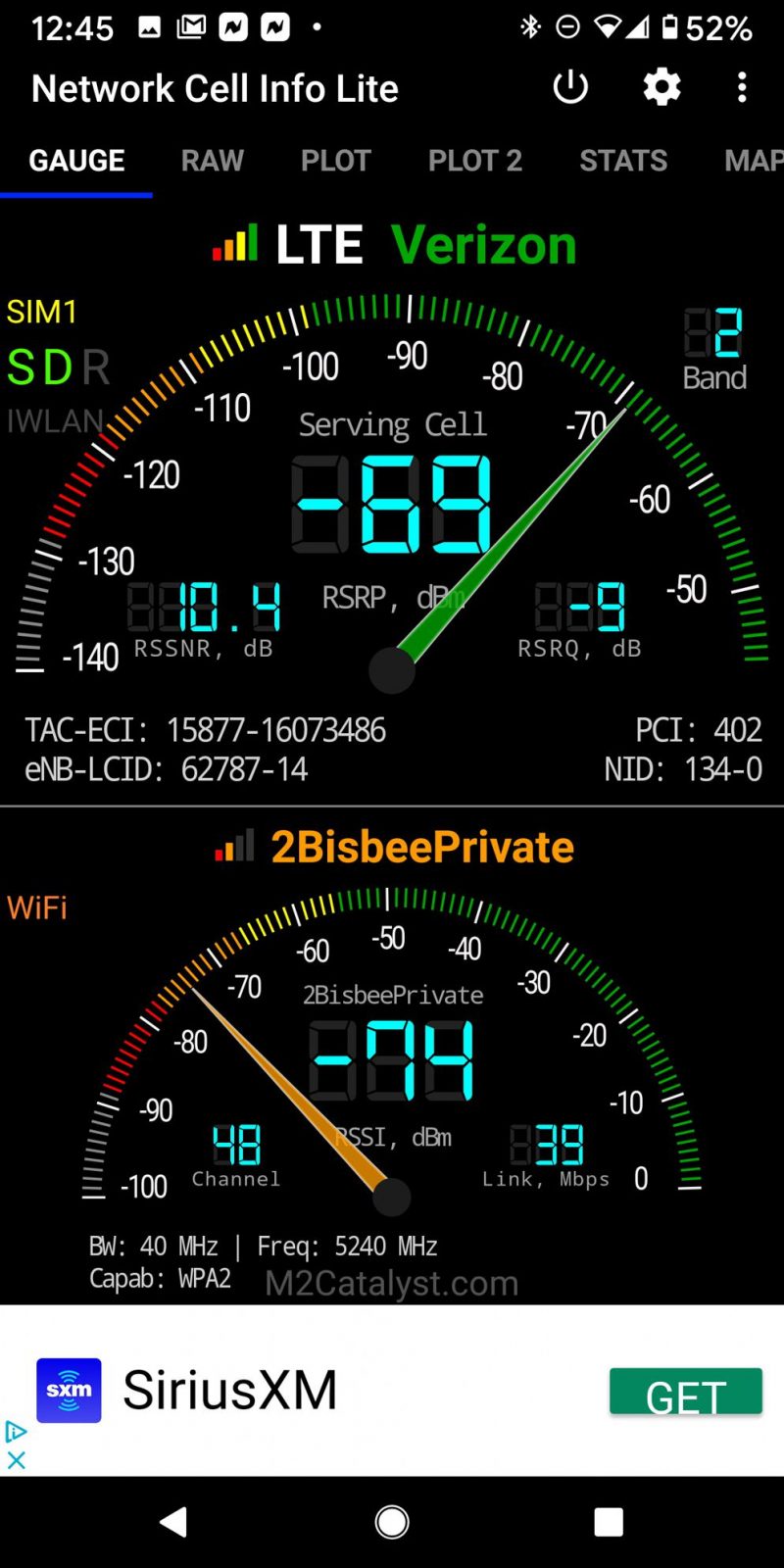

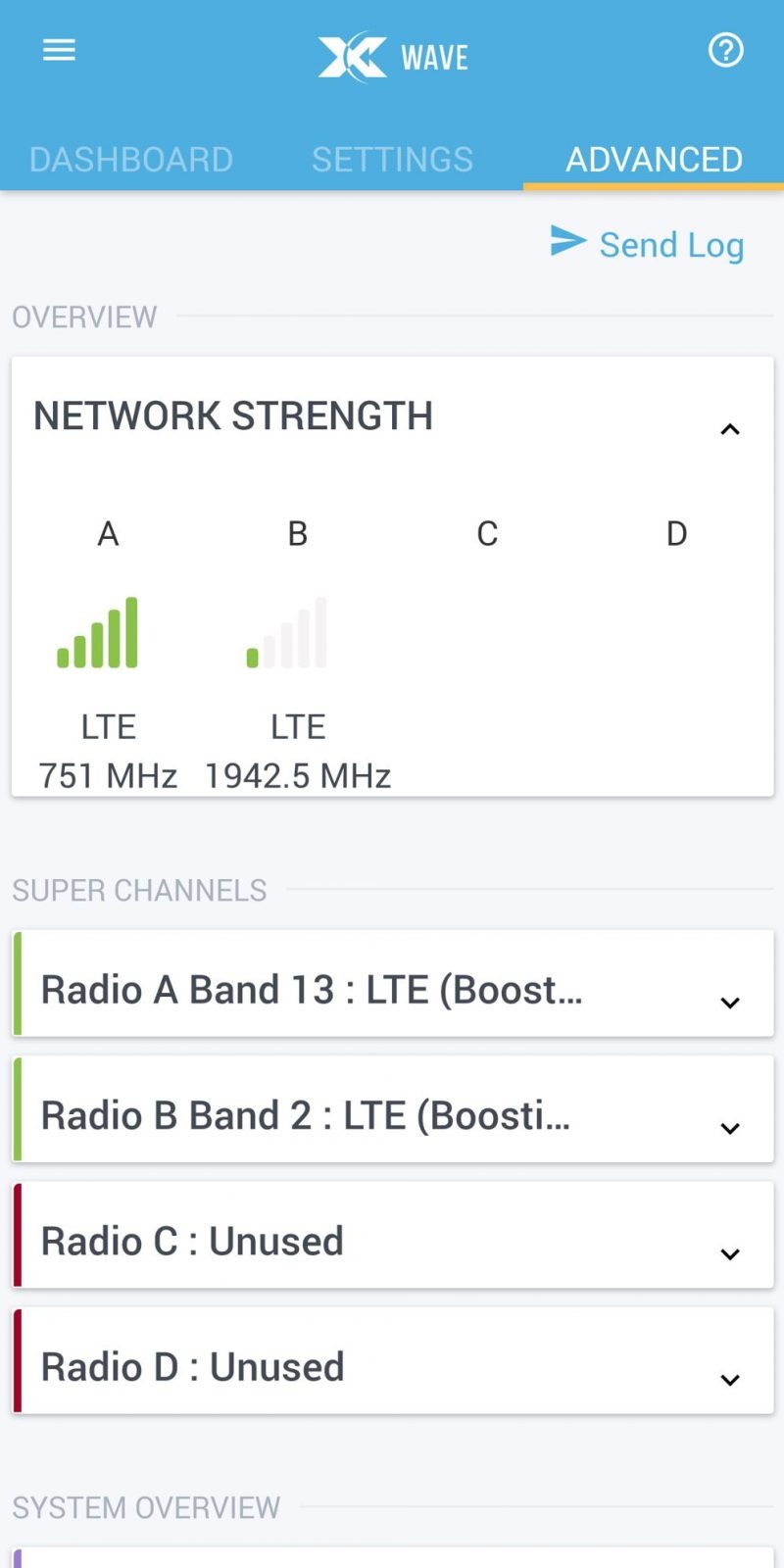

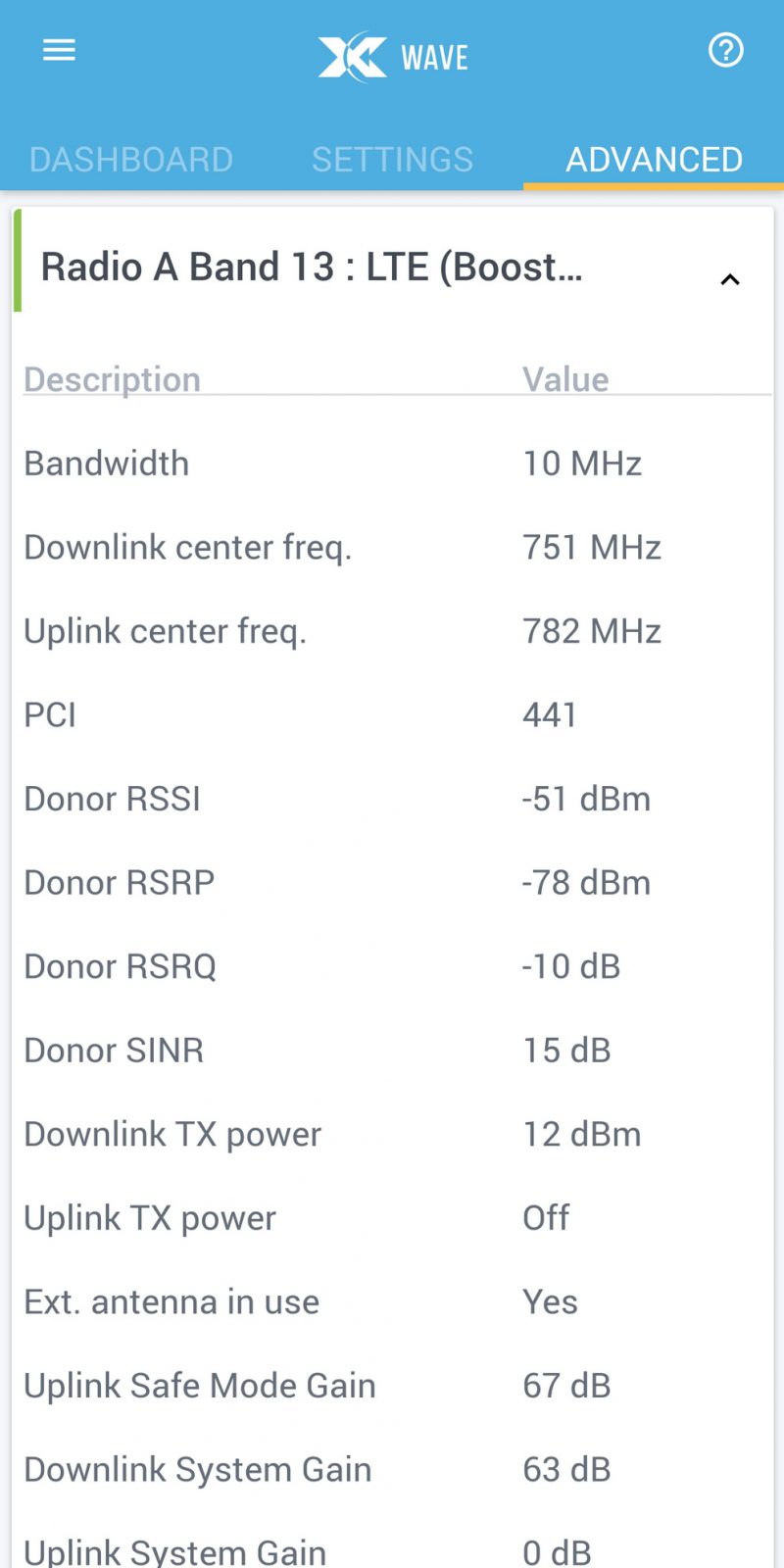





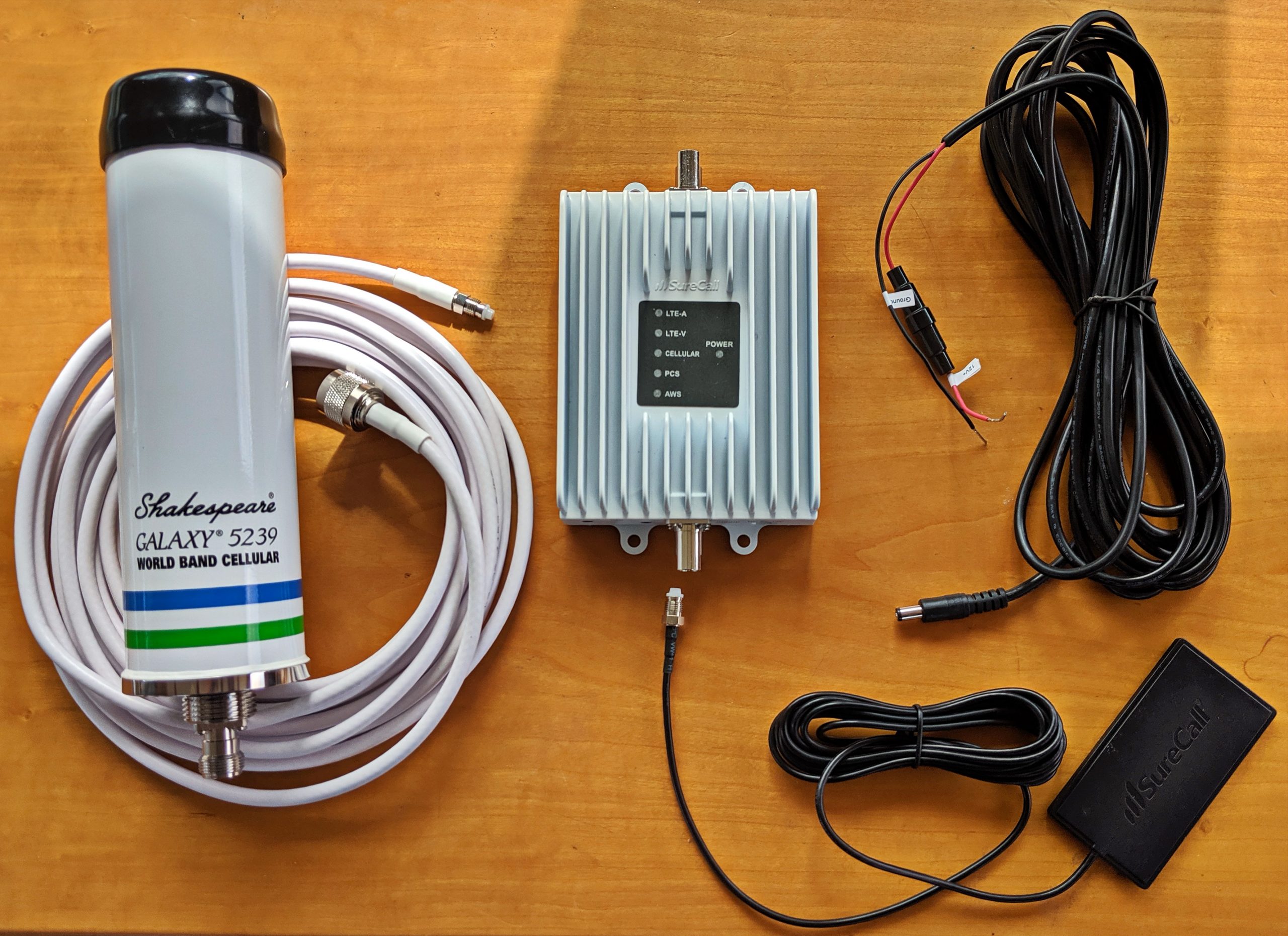
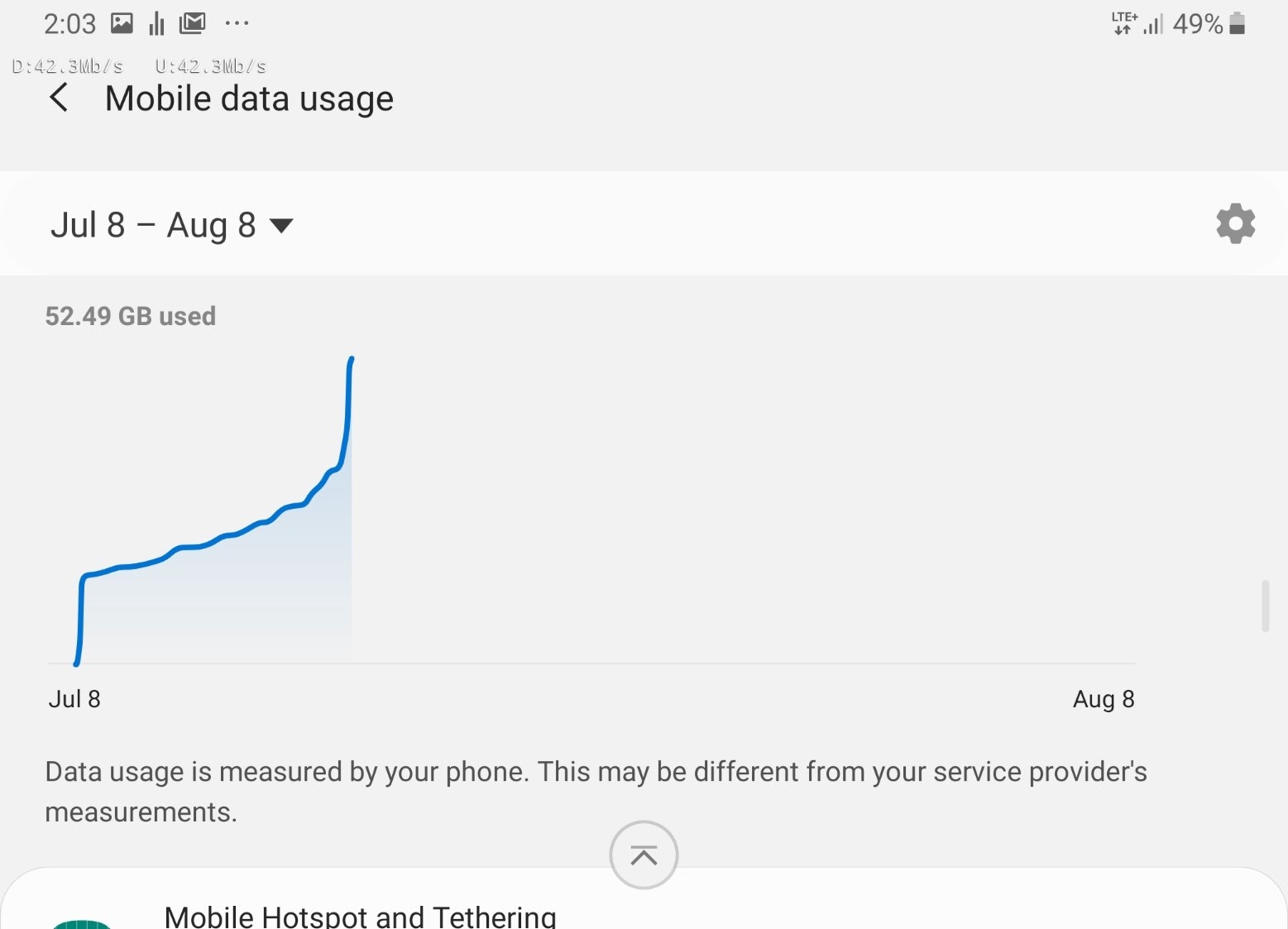

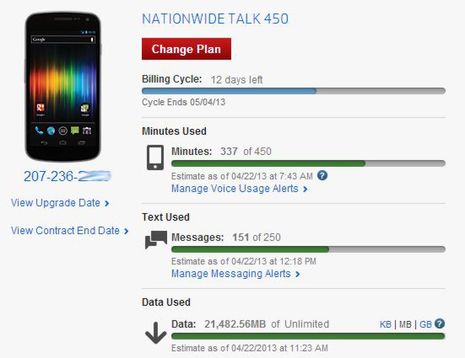







I have been using the CellFi Go (stationary model) in my boat for around 18 months, and echo Bens comments about performance and features. It works very well and is “set and forget” in australia — our rules differ a little, we have been allowed to use the 100dB gain even in a marine aka non stationary mode. However I rarely ever see it deliver this type of gain — which is impacted by antenna isolation ((RF seperation) and various other factors.
My setup
Outdoor antenna (7.5dB to 4.5dB colinear – gain varies with freq band) mounted on radar arch (approx 5m above sea level)
Indoor patch style antenna – mounted inside cabin 2m below donor .. but about 4m horizontal.
Antenna isolation seems quite good and I have seen Wave App report gain of 90+dB. One thing I’ve noted: the Rx signal level as reported by my phone (same app as Ben uses) shows the Rx SS – standing “next to antenna”) is similar to that reported by the CellFi Go, which demonstrates the importance of minimizing the cable length between donor antenna and CellFi unit.
The cable length between CellFi & “server” antenna is a lot less critical, so if possible – keep the CellFi as close as possible to the donor antenna (shorter cable) .. and run a longer cable to the server antenna.
One important point to note – the “stationary” model accepts input voltage to “28.8V” and hence is suitable for use in a 24V system (which Im using) – however as Ben notes – the Go M/Go X versions are “only” suitable for 12V systems… (dont know why they changed this?)
Electrically and performance/specs appear the same between stationary/M/X (aside from the IP rating – important in marine – depending of course on location)
On my unit – a cable tie and some heat shrink solved the “captive” power plug challenge .. but good to see they have improved this on the M/X models
Thanks, Greg!
Another way to minimize signal loss between donor antenna and the booster is ultra low loss coax cable like LMR400.
Also, I think that the various Cel-Fi GO system names — Stationary / Mobile / GO M / GO X / GO+ — are pretty confusing until you realize that there are only two underlying booster models, G31 and G32. Plus the early firmware apparently did not allow mobile/stationary or maybe even carrier switching in the field. But now the GO M, GO X, and GO+ — all model G32 — are functionally the same, I’m pretty sure, with only included power sources being different:
https://cel-fi.com/go/
Hi Greg, nice write up. I can confirm that the North American Cel-Fi GO can support a DC input of up to 24VDC. It just isn’t documented very well. It’s an outstanding feature and another impressive addition from the folks at Cel-Fi
Ben
depending on current operating mode (3G or 4G ) there are a few key parameters to interpret.
I found a simple table for 4G which I use when snooping on the wave app.
I cant attach it to the comments, but its at this URL
https://www.cablefree.net/wirelesstechnology/4glte/lte-rsrq-sinr/
Thanks again, and wish we could enable image uploads in these comments (as is possible on our Forum). Plus, given a URL, we editors can do it.
I have used this booster as well, and it definitely has some of the strongest / highest amplification out there. I absolutely love the app and being able to tune things, and their product overall is of very high quality.
There are also a few limitations. First is the fact that you have to choose a specific carrier which can be limiting for those of us with dual radio devices. I use a Peplink MAX Duo as my primary router which has two radios, and I use two different SIMs from different providers simultaneously. The Cel-Fi will only boost one of the two radios. They also have much more limited band support than a traditional booster.
Second, and you can find this elsewhere online as well, their firmware has been a long and bouncy road. Initially there were a lot of issues, and over the last 2 years things have been updated, but it took a long time. I think this is directly related to one of the things I love about the product – it isn’t just a simple amplifier and antenna, but a software controlled system. With that comes more complexity in both a good and bad way.
Finally, the price of almost $1000 makes this double the cost of a similar non-software booster, so you really have to make sure you need the extra amplification, and are OK with only boosting one signal at a time. It is a fantastic piece of hardware, but just like everything else in the tech/marine world, you have to weigh the pros and cons!
Thanks, Steve, but I see the Cel-Fi GO booster available from many sources at about $600, and the complete Marine Kit for about $800 (why Waveform’s current $764 price seems good).
Good point – I was thinking of the X model at $999. They’re still more expensive than standard boosters, but a $764 price is better than $999!
100db gain is 10^10 power increase. 30db gain would be 1000x power. Next thing you know companies will be claiming to create energy. Good to hear it’s working well.
Great overview, Ben.
But – there is one important thing to keep in mind when testing cellular boosters – for the most part, bars are meaningless.
You really shouldn’t pay much attention at all to the increase in bars / signal strength, and instead should compare A/B speed tests with the booster turned on and turned off.
You will quickly discover that it is not at all unusual for a “weaker” signal to actually be faster, and sometimes enabling a booster will actually slow down download speeds. In fact, sometimes boosters can cut downloads speeds in half, but at the same time way more than double upload speeds.
This is why a booster should never be left on all the time – they are tools to be used only when you need them.
We’ve got a lot of general guidance on cellular boosters for boats and RVs here:
http://rvmobileinternet.com/boosters
Cheers,
– Chris
Thanks, Chris. I know that you’ve had the Cel-Fi Go in your test program for quite a while, and wonder how the latest firmware version is doing?
https://www.rvmobileinternet.com/gear/cel-fi-go-m/
Also, I totally agree about boosters being an “as needed” tool, and in my experience with Verizon, they are not much needed along the coast from North Carolina to Camden, Maine… unless you go offshore or up a remote creek. But Downeast of here is a real challenge perhaps regardless of carrier, and I’m hoping that the GO will deliver.
However, I do often find a correlation between increased signal strength — as seen in a good app like Network Signal, not the phone’s optimistic little bar graph — and actual data performance. For sure, improved signal strength does not necessarily mean improved data performance, but it’s often the case in my experience. And usually easy to determine, because (unlike this initial bench test) I don’t mess with a booster on the boat unless I’m having trouble doing what I want to do online.
Hey Ben
Interested if you have been able to get on the water tests done this summer. Really interested in the Perry Creek results as that is the most frustrating place to try and connect and stay connected. Hoping this works as well as the promise shown in the review so far.
PS Was in Northeast Harbor last week and was pleasantly surprised to have great Verizon cell service – must be new tower somewhere near now.
Hi Ron, I’ve been slow but just installed the Cel-Fi antenna on Gizmo’s masthead a couple of days ago. First time I’ve had a cell antenna that high, and if anything can conquer Perry Creek, this may be it. Hope to test that concept this month or early Sept.
Also, great to hear that Verizon is better in Northeast. We’d love to get there again soon, but getting online has been an issue in the past, even with the Public Landing WiFi.
Ha! I’m back in Perry Creek actually on the same mooring where I couldn’t get the normally good Surecall/Shakespeare cell booster to work. But the Cel-Fi is making it happen, though it took the extra power of Stationary mode and its still not exactly speedy.
Hi Ben, I wondered if you have any updated impressions/experience to share regarding the Cel-Fi…. good, bad or otherwise. We’re looking to obtain increased coverage range in our cruising waters, Prince William Sound in Southcentral Alaska (using AT&T who contracts with Cordova Telecom’s 3 towers serving the Sound). We’re currently researching weBoost, Cel-Fi, and SureCall, but open to any other product that might be a good fit for our 37 Nordic Tug.
Thanks for asking, John. I recently commented in some detail about my Cel-Fi testing but it’s over on the Surecall/Shakespear booster thread (and I should have referenced it here):
https://panbo.com/cell-boosters-for-pandemic-times-testing-shakespeare-stream-surecall-fusion2go/#comment-166931
In short, it worked well for me in completely automatic mode but when I found myself in challenging situations (sometimes purposely), the Cel-Fi could deliver all sorts of information about the various signals it was seeing plus tools to solve the problem.
I got usable data speeds in places where other boosters failed by changing up to fixed location booster power and/or turning off specific cell source frequencies that looked good to my phone but weren’t. The tools are quite cellular geeky but there is some help built into the Cel-Fi app. Also, while I love anchoring in remote coves, I’m also motivated to get a data and audio call connection at least some of the time.